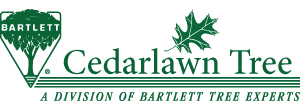Caring for Aging Trees – Part I
When is a tree considered old? There are records of individual trees of certain species that have reached over 4000 years of age. The trees growing in our yards, however, are not likely to come close to this. Generally, most of the tree species growing in landscapes here in the northeast US have an average lifespan of 50-150 years or so, depending on species. For an individual tree, degree of susceptibility to insect and diseases along with growing location factors such as:
1) soil type and moisture availability
2) area available for root growth
3) wind and sun exposure and
4) absence of growing environment alterations or changes often determine actual tree longevity
A good example here is a street tree as compared to a tree growing in your back yard. A street tree is exposed to many hazards and assaults to tree health such as vehicular damage, pedestrian soil compaction, road de-icing salts, restricted rooting environments, lack of soil moisture and exposure to wind and weather. On study estimated average street tree longevity at closer to 30 years or less depending on locality and site conditions.
How does the care for a mature tree differ from that of a maturing tree? Like all living organisms trees require inputs to sustain life. In the case of trees, photosynthesis drives the production of energy resources (sugars) needed to survive. Through respiration, these resources are burned to produce the energy needed for growth, reproduction, and defense and to drive processes needed to support these events. Carbohydrates not required for current functions are stored as nonstructural carbohydrate reserves that can be utilized during times of high need. In maturing, non-stressed trees the ratio of photosynthate-producing foliage to woody tissue is higher than in mature trees. As a result, these younger trees generally are able to build up a “cache” of energy reserves that are stored in trees to be utilized in times when energy requirements are higher. Mature trees, in contrast, have a much higher woody component to leaf ratio. Mature trees, as a result, often walk a thin line as far as being able to draw on enough energy reserves to meet all their physiological requirements. As we examine mature tree care in the following blogs this will help to explain the differences in care needed.






